
Lot 345

THE BLAIR CASTLE ‘FLINTLOCK’ AIR PISTOLS
A VERY RARE PAIR OF LATE 18TH CENTURY ‘FLINTLOCK’ AIR PISTOLS, EDWARD BATE, LONDON CIRCA 1770
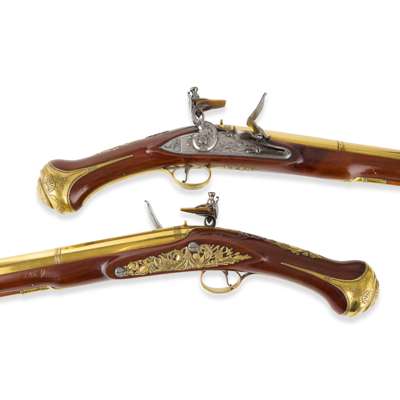
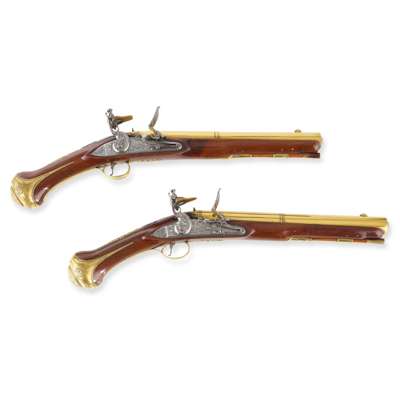
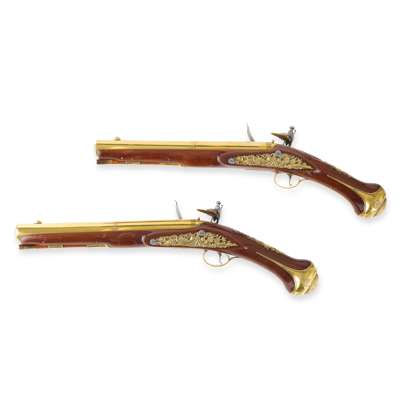
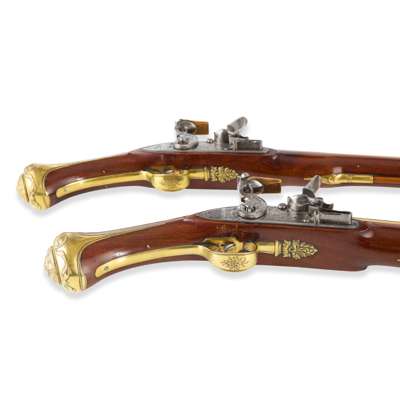
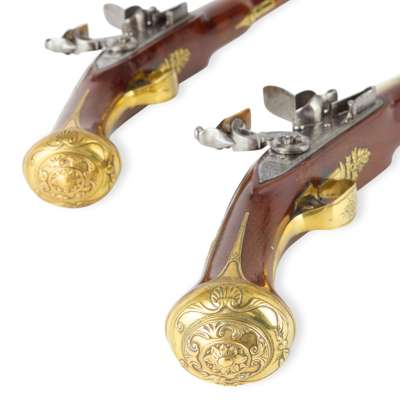
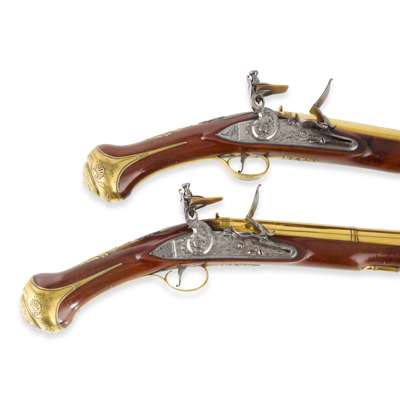


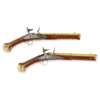
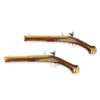
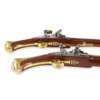
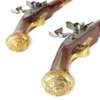
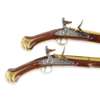
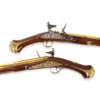
Auction: Day 2: Thursday 21 August - Lots 297 - end
Description
the brass barrel with two stages, signed Bate London, each containing air reservoir, the front section with applied sight, the flat steel lock and S-scroll hammer with foliate engraved decoration and signed BATE, the figured walnut stocks with carved rococo shells and inlaid with cast brass trophies of arms displayed, with brass butt caps with shell detail, set with horn ramrods (2)
Dimensions
30cm (barrel), 50cm (overall)
Provenance
Likely the property of John Murray, 3rd Duke of Athol (1729 – 1774)
By direct descent
The Blair Charitable Trust, Blair Castle, Blair Athol, sold
European Noble & Private Collection, Christies, 30th April 215 lot 193
Footnote
These extremely rare pistols are perhaps the only of this type with Scottish provenance; there are no recorded examples of air pistols having been made in Scotland. For similar examples sold see the W. Keith Neal Collection, Christie's, King Street, 9th November 2000, lots 237 and 25 October 2001, Lot 231, and another in the collection of the Royal Armouries, Leeds (inv. no. XII. 3833).
Edward Bate was apprenticed in 1743 to a Birmingham gun maker, Sam Brown. In 1763 he established his own business in Brownlow Street, Long Acre, staying till around 1778. By 1800 he is recorded at Christchurch, Brixton. The quality of his work is obvious and noted when he became a contractor to the Ordnance from 1779 to 1783. Not just working within the norms of the day, his work was innovative and he partnered with another notably innovative gunmaker William Jover from 1805 to 1810.
His innovation is especially notable for his production of fine airguns and pistols, of which the present lot must rank among his finest. He often disguised these air pistols, as seen here, to look like contemporary Flintlock examples. There were two main firing systems - either a spherical iron reservoir which was unscrewed from the underside of the weapon or a reservoir within the butt and barrel of the gun, either being removed to be recharged. Each system could contain sufficient compressed air to enable the weapon to be discharged a number of times.
Note: Sold as an exempt item under Section 58 (2) of the 1968 Firearms Act, to be held as a curiosity or ornament













